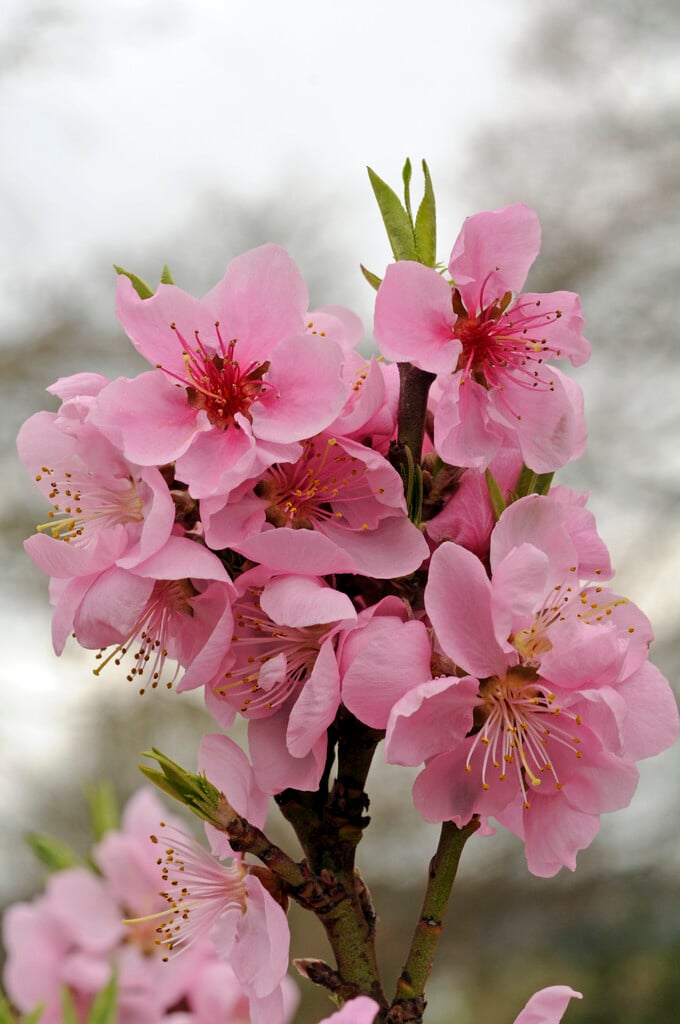Prunus persica 'Amber' (F)
peach 'Amber'
A naturally dwarf, self-fertile peach cultivar with attractive long slender green leaves to 15cm long, and pink spring blossom followed by large, golden-orange fruit flushed red, with sweet yellow flesh. Ideal for container cultivation. Cropping season: late July

Size
Ultimate height
1–1.5 metresTime to ultimate height
5–10 yearsUltimate spread
1–1.5 metresGrowing conditions
Moisture
Moist but well–drained, Well–drainedpH
Acid, Alkaline, NeutralColour & scent
| Stem | Flower | Foliage | Fruit | |
| Spring | Pink | Green | ||
|---|---|---|---|---|
| Summer | Green | Gold Orange Yellow | ||
| Autumn | Gold | |||
| Winter |
Position
- Full sun
Aspect
South–facing or West–facing
Exposure
Sheltered Hardiness
H4Botanical details
- Family
- Rosaceae
- Native to GB / Ireland
- No
- Foliage
- Deciduous
- Habit
- Bushy, Spreading branched
- Genus
Prunus can be deciduous or evergreen trees or shrubs with showy flowers in spring, and often good autumn foliage colour. Some have edible fruit in autumn, and a few species have ornamental bark
- Name status
Unresolved
- Horticultural Group
- This genus produces fruit, but not necessarily edible fruit
How to grow
Cultivation
Ideal for growing in containers. Preferably overwinter container grown plants in a protected environment such as cold greenhouse. Outdoors plant in very sheltered spot and moist, but well-drained soil in full sun. Protect flowers from frosts with biodegradable horticultural fleece. See peach cultivation or how to grow: peaches for further advice
Propagation
Peach cultivars are propagated by grafting onto a rootstock for fruit. Can also be propagated by seed, although the resulting fruit is likely to be inferior to that of the parent plant
Suggested planting locations and garden types
- City and courtyard gardens
- Cottage and informal garden
- Patio and container plants
- Wildlife gardens
- Edible fruit
- Wall side borders
Pruning
Pruning group 1. Dwarf cultivars need litlle or no pruning. Prune in mid-summer if silver leaf is a problem
Pests
May be susceptible to glasshouse red spider mite, aphids, and scale may be problematic, especially on wall-trained specimens or those grown in a glasshouse. Squirrels and birds may damage fruit
Diseases
May be susceptible to peach leaf curl, bacterial canker, silver leaf, brown rot, blossom wilt and honey fungus. Replant diseases may cause problems. Late frosts can damage the blossom
Get involved
The Royal Horticultural Society is the UK’s leading gardening charity. We aim to enrich everyone’s life through plants, and make the UK a greener and more beautiful place.